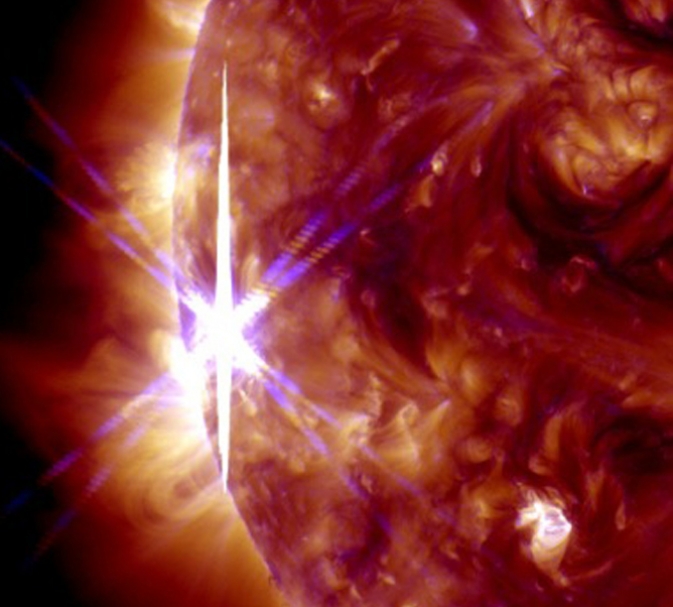
Things are really starting to heat up on the sun. Our star blasted out yet another strong flare late Friday morning (Oct. 25), continuing a pattern of high and intensifying solar activity over the past few days.
The most recent flare, which erupted at 11:03 a.m. EDT (1503 GMT) Friday, registered as an X-class event, the most powerful type. It clocked in at X2.1 on the space weather scale, beating out the X1.7 flare that the sun fired off just seven hours earlier. (Astronomers classify solar flares into three categories — C, M and X — with C being the weakest and X the strongest.)
Friday's two monster flares came closely on the heels of a moderate M-class eruption and another one that nearly reached X-class status, peaking at M9.4. The Wednesday night (Oct. 23) eruption that produced the M9.4 flare also generated a huge cloud of super-hot plasma known as a coronal mass ejection (CME), which can streak through space at millions of miles per hour.
Three other CMEs erupted between Sunday and Tuesday (Oct. 20 to Oct. 22), and they merged into a single cloud of material as they headed toward Earth. None of this activity is expected to cause major problems here on Earth, experts say, though both of Friday's flares caused temporary radio blackouts in some regions.
It's not surprising to see so much action on the sun, scientists say. Our star is in the peak year of its current 11-year activity cycle, which is known as Solar Cycle 24. Increased numbers of flares and CMEs are common during solar maximum.
Follow Mike Wall on Twitter @michaeldwall and Google+. Follow us @Spacedotcom, Facebook or Google+. Originally published on SPACE.com.
Get the Space.com Newsletter
Breaking space news, the latest updates on rocket launches, skywatching events and more!
Join our Space Forums to keep talking space on the latest missions, night sky and more! And if you have a news tip, correction or comment, let us know at: community@space.com.

Michael Wall is a Senior Space Writer with Space.com and joined the team in 2010. He primarily covers exoplanets, spaceflight and military space, but has been known to dabble in the space art beat. His book about the search for alien life, "Out There," was published on Nov. 13, 2018. Before becoming a science writer, Michael worked as a herpetologist and wildlife biologist. He has a Ph.D. in evolutionary biology from the University of Sydney, Australia, a bachelor's degree from the University of Arizona, and a graduate certificate in science writing from the University of California, Santa Cruz. To find out what his latest project is, you can follow Michael on Twitter.

